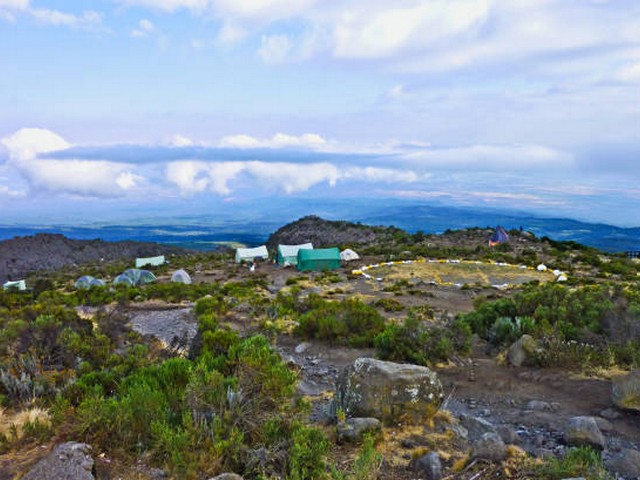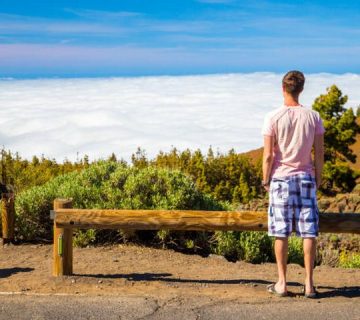Embrace the Mountain: Discover Low-Impact Trekking Tours on Kilimanjaro with KCTE
Nestled in the heart of Tanzania, Mount Kilimanjaro is not just Africa’s tallest peak but also a symbol of nature’s grandeur and enduring mystery. At Kilimanjaro Centre for Trekking and Ecotourism (KCTE), we understand the magnetic pull Kilimanjaro exerts on the spirit of adventure seekers worldwide. For those drawn to its heights but mindful of the environmental footprints they leave behind, our Low-Impact Trekking Tours are crafted just for you. This responsible journey respects the mountain’s delicate ecosystems while offering an unforgettable trekking experience. Let’s explore how you can tread lightly on this majestic mountain and still fulfill your adventurous desires.
Why Choose Low-Impact Trekking Tours?
Sustainable Adventure
Low-impact trekking is more than a buzzword; it’s a commitment to preserving the natural beauty and integrity of Kilimanjaro’s unique environment. By choosing these tours, you participate in sustainable practices that minimize ecological disruption, support conservation efforts, and contribute to the well-being of local communities.
Immersive Nature Experience
Without the heavy trappings of conventional tourism, low-impact trekking allows for a deeper connection with nature. It means smaller groups, quieter paths, and a chance to appreciate the serene beauty of Kilimanjaro’s flora and fauna up close and personal.
How Does KCTE Ensure a Low-Impact Trek?
Eco-Friendly Practices
At KCTE, our low-impact philosophy is woven into every aspect of our tours. From using biodegradable products to ensuring all waste is carried off the mountain, we leave nothing behind but footprints. Our guides are trained in eco-sensitive techniques to ensure that the trails and habitats are left undisturbed.
Supporting Local Communities
We believe that the communities residing around Kilimanjaro are crucial to the mountain’s sustainable future. Our tours integrate local guides, purchase local supplies, and engage with community-led initiatives. This not only enhances the trekking experience but also helps distribute economic benefits fairly.
Best Routes for Low-Impact Trekking
The Lemosho Route
Regarded as one of the most scenic paths up Kilimanjaro, the Lemosho Route is perfect for a low-impact trek. Its longer duration means a gentler acclimatization, fewer crowds, and a higher success rate. The route’s untouched beauty and diverse ecosystems make every step a discovery.
The Rongai Route
The Rongai Route offers a tranquil trekking experience on the mountain’s north side, known for its wilderness feel and wildlife encounters. Its gradual ascent profile and remoteness help minimize the ecological strain, ensuring a sustainable adventure.
What to Expect During Your Trek
Expert Guidance
Our experienced guides are passionate about Kilimanjaro and equally committed to sustainable trekking practices. They’ll lead you through breathtaking landscapes while sharing insights about the local ecology and cultural significance of the mountain.
Comprehensive Prep and Support
From pre-trek briefings that cover responsible trekking etiquette to a full rundown of what to pack and how to prepare, KCTE ensures you’re well-equipped for the journey. Our support crews are adept at making your adventure safe, comfortable, and environmentally friendly.
Gear and Preparation for Low-Impact Trekking
Choosing the Right Gear
Invest in high-quality, durable trekking gear that can withstand Kilimanjaro’s varying climates. Lightweight, multi-use items reduce your load, which in turn lessens the impact on the trail. Opt for solar chargers and reusable water containers to minimize waste.
Physical and Mental Preparation
The unique challenge of Kilimanjaro isn’t just physical but also mental. Preparing for your trek with appropriate training, and understanding the ethos of low-impact trekking, sets the stage for a successful and respectful climb.
Join the Low-Impact Movement with KCTE
Embracing low-impact trekking isn’t just about seeing the world; it’s about preserving it for future generations to experience and enjoy. When you book your Kilimanjaro climb with Kilimanjaro Centre for Trekking and Ecotourism, you’re choosing to make a difference.
FAQ: Low-Impact Trekking Tours Kilimanjaro
Q1: How long do low-impact treks usually take?
A1: Low-impact trekking routes typically range from 7 to 9 days, depending on the route and pace, allowing for effective acclimatization and minimal environmental impact.
Q2: Are there age restrictions for low-impact trekking tours?
A2: Generally, trekkers should be over the age of 10, with no upper age limit as long as you are physically and mentally prepared for the challenge.
Q3: What is the best time of year to book a low-impact trek?
A3: The best times are during the dry seasons, from June to October and from December to March, when the trails are more stable and the weather is favorable.
Q4: How does KCTE handle emergency situations during the trek?
A4: Safety is our top priority. We have detailed emergency procedures, experienced guides trained in first aid, and regular communication systems in place throughout the trek.
Q5: Can I book a private low-impact trekking tour?
A5: Absolutely! KCTE offers the option to arrange private treks for individuals or groups seeking a more personalized experience.
Ready to Conquer Kilimanjaro Responsibly?
Our Low-Impact Trekking Tours are designed for those who dream of reaching the summit of Kilimanjaro while respecting the natural world that makes this adventure possible. Book your climb with Kilimanjaro Centre for Trekking and Ecotourism today and join a community of conscientious trekkers who share your love for adventure and commitment to the planet. Let’s make your Kilimanjaro journey inspirational and sustainable. Embrace the mountain, the KCTE way.




